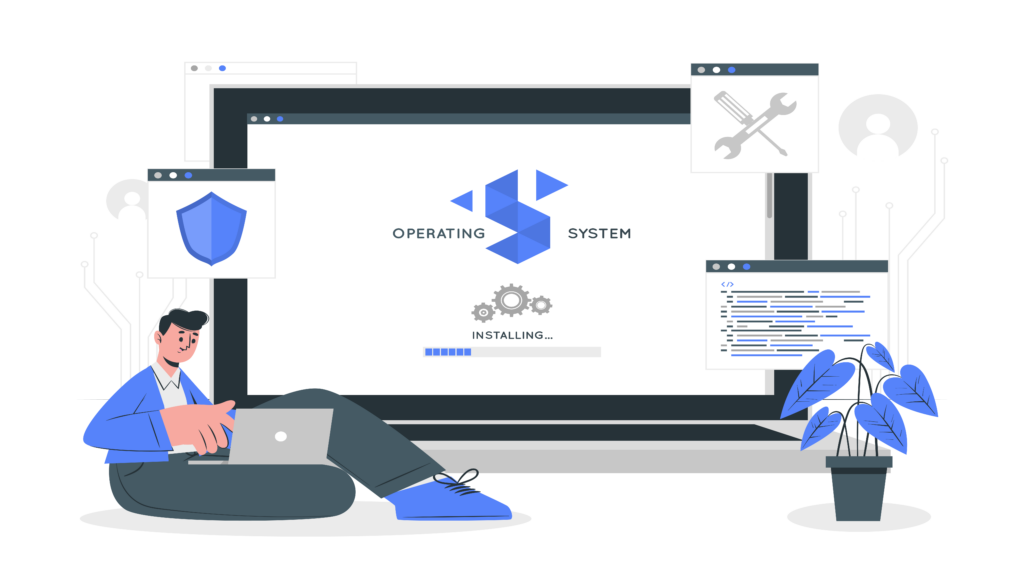
In the tech world, Gartner predicts that by 2024, 65% of apps will be made using easy tools, not hardcore coding. A TechRepublic report backs this up, saying 60% of custom apps are made outside the usual IT crowd, and 30% by folks with almost zero tech skills.
Why does this matter? Well, it’s changed how businesses operate. Thanks to custom apps, we’ve ditched the old paper mess and complicated spreadsheets. Everything’s smoother now without manual data entry. But let’s be real – not everyone’s a coding geek. That’s why having simple tools for making apps is a game-changer in today’s digital game.
In this blog we will discuss about how low-code/node-code development will change the future of development and how one can build apps without coding knowledge.
What is low code?
Low code is a new way to make web apps that’s easier than the old-fashioned coding. It uses a simple drag-and-drop system, making it friendly for both newbies and experienced folks. This helps create business apps faster and includes more people in the process.
Now, there’s also something called No or zero-code. It’s even simpler – no coding skills needed. Here’s a quick difference:
Low code
- Makes app creation faster without ditching coding completely
- Good for big companies that want quick apps with room for customization
No-code
- Super easy, designed for total beginners
- Everything happens visually, perfect for regular folks or new developers wanting an easy app-making experience
How low-code is different from no-code?
Consider low-code application platforms as an expedient means for skilled developers to produce solutions, enabling your IT staff to handle additional business needs. However, no-code allows business developers to design apps that address challenges related to workflow efficiency and other business process problems.
You can eliminate the need for the coder to even stand in the way of the solution’s original designer, while the other makes coding simpler and faster for those who write it. In the opinion of numerous firms worldwide, it goes one step further.

Top reasons why No-code/low-code will be the future of the development
1: Rapid development
One of the key advantages of providing room for no code/low-code development is that you don’t have to wait longer to get the work done. It is because developers don’t have to spend their valuable time in writing longer versions of the code which they have to otherwise use while building an application with a conventional approach. All that a developer must do is drag and drop components and widgets into the development platform making development easier and quicker like never before.
2: Cost-effective
Apart from being a faster way of developing applications, no code or low code is also quite cost-effective when compared to the traditional way of development. As companies don’t have to spend time and money on hiring experienced developers, they can use the funds for something more valuable when they can achieve similar results with no code/ low code.
3: Building applications without coding knowledge
No-Code/Low-Code platforms are made to cut down on the coding know-how required for app development. This means even those with less experience can create web and mobile apps without having to assemble a team of experts.
4. Boost in Productivity
No-code/low-code development makes developers more productive. Instead of wrestling with long lines of code, they can focus on creating great designs and user-friendly experiences. This leads to better and more user-intuitive applications and websites.
5. Simplified maintenance
Maintaining apps and websites becomes a breeze with no-code/low-code development. Everything in the application is visual and easy to grasp. This makes it quick for developers to spot and fix any issues that might pop up.
6. Improved efficiency
No-code/low-code platforms let developers build applications using fewer resources and in less time. This means organizations can roll out applications faster and more efficiently.

7. Better user engagement
Developers using no-code/low-code can create applications that engage users more effectively. The simpler user interface encourages more interaction and keeps users engaged with the application.
8. Simplicity at its core
No-code/low-code platforms are built to be simple and easy to use. Users can quickly create applications without diving into complex coding languages, making them perfect for those without extensive technical knowledge.
9. User-friendly
No-Code/Low-Code platforms let users swiftly create applications without grappling with difficult coding languages. They are designed to be straightforward, making them a great choice for app development without requiring deep technical expertise.
10. Reduced failure rate
Big projects often face high failure rates due to costs, rigid schedules, and unclear standards. No-code/low-code development addresses this by speeding up the process without the need for expensive IT specialists. This significantly lowers the risk of failure, often linked to budget or timeline issues. When a company creates the application on its own, the chances of failure are also minimized.
Conclusion
In conclusion, the rise of no-code/low-code platforms mark a significant shift in the landscape of application development. These tools not only empower less experienced developers but also enhance productivity, ease maintenance, and boost efficiency. With simplified interfaces and user-friendly features, they encourage creativity and engagement, allowing businesses to create impactful applications without the need for extensive coding expertise.
The simplicity, speed, and reduced failure rates associated with these platforms make them a game-changer for organizations aiming to stay agile and responsive in the ever-evolving digital realm. Embracing no-code/low-code development opens new avenues for innovation, making technology more accessible and adaptable for businesses of all sizes.










